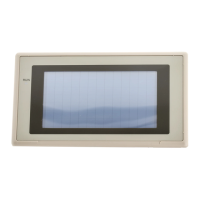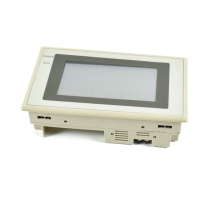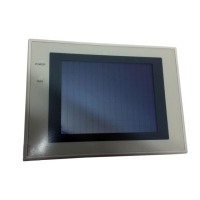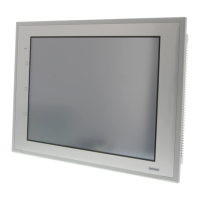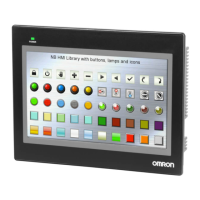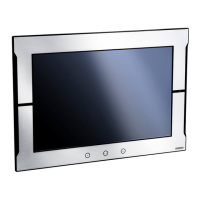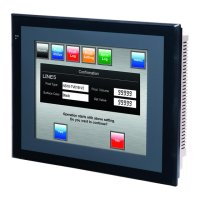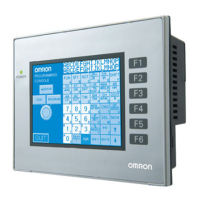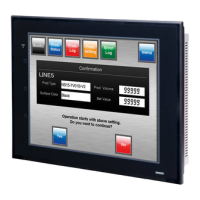3-4SectionDisplay and Control of Windows
307
3-4 Display and Control of Windows
A window means a partial screen that can be displayed on the presently dis-
played screen (base screen).
A window can be created by registering a screen under a screen number from 1
to 3999 as a window screen.
This section describes the following types of operation that can be performed for
a window.
• Opening/closing/moving a window
• Checking the display status of a window
• Disabling/enabling the opening of a window
Reference: Window screen is called window/keyboard screen at the Support Tool.
Window has the following two types.
Global window:
Local window:
3-4-1 Opening/Closing/Moving a Window
The PT provides the following methods to open/close/move a window.
• Pressing a touch switch that has the input key-window/keyboard function.
(Opening/closing are possible)
• Pressing a touch switch that has the cursor moving key function. (window
opening only)
• Pressing a touch switch that has the window moving key function. (window
moving only)
• Controlling the window by the operation of the window control area from the
host (Window opening/closing/moving are possible)
• Setting Load Local 1 (Keyboard), Load Local 2 screen attribute for a standard
screen and perform screen switch. (window opening only)
Reference: If 1 (disable) is set for the window opening PT status control bit, it is not pos-
sible to open a window by operation at the PT. (Closing of a window is al-
lowed.)
Touch switch operation will be disabled when the touch switch interlock func-
tion is being used and the host’s interlock bit that controls the touch switch’s
operation is OFF. (See Disabling Touch Switches with Interlock Bits on page
368 for details.)
If the window for which open is specified is not a window screen, the window
open command is disregarded.
When creating a screen with the Support Tool, it is possible to designate a win-
dow that is opened at the same time the screen is displayed (set with the Load
Window/Keyboard Screen attribute of Screen Property).
